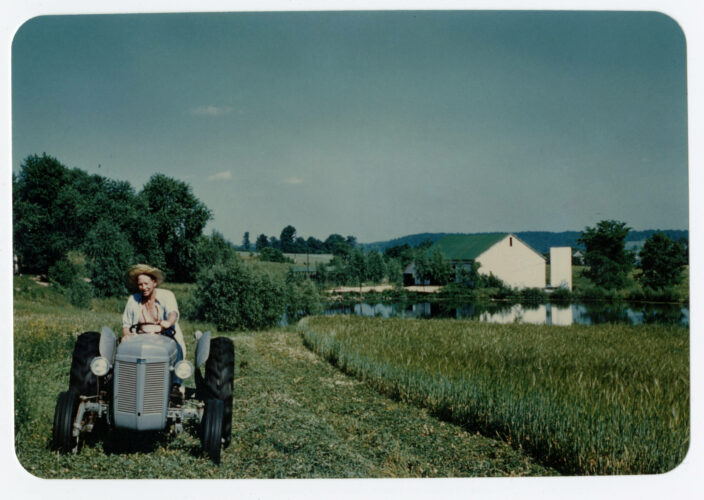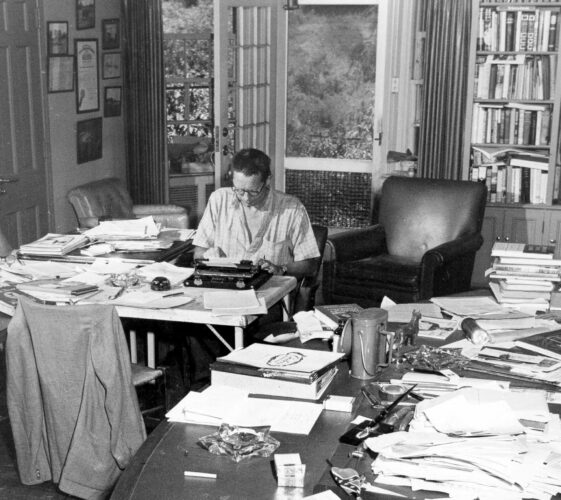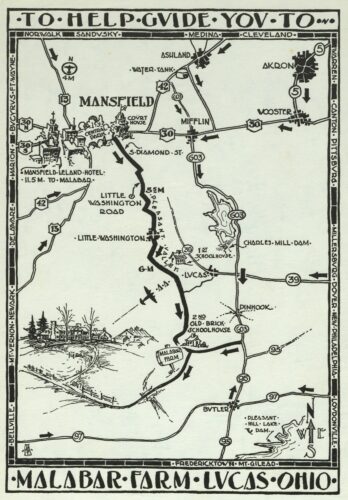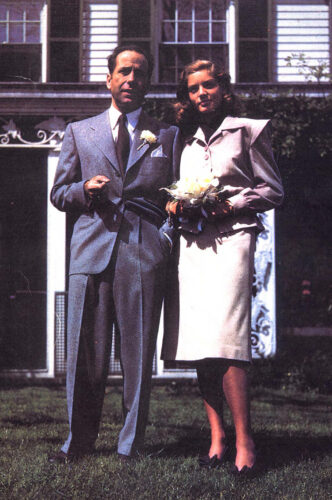The Legacy of Louis Bromfield and Malabar Farm

You may think that the work of Hollywood’s finest in climate change awareness and ecological conservation is a more recent phenomenon. However, prominent socialites, writers, and entertainers have used their fame to advocate for sustaining and building a better world for decades, including Ohio’s own Pulitzer Prize winning author and conservationist, Louis Bromfield.
Louis Bromfield was born in Mansfield, Ohio, on December 27, 1896. In 1914, Bromfield enrolled in Cornell University’s Agricultural College to study scientific agriculture, but returned to Mansfield in 1915 to help on the family farm. In 1916, his parents sold their farm, and Bromfield studied journalism at Columbia University. During World War I, Bromfield served in the U.S. Ambulance Service, Section Sanitaire Americain No. 557, and was recommended for the Croix de Guerre. After the war, he traveled throughout France and observed various sustainable farming techniques used to achieve self-sufficiency, meaning the techniques used replenished the land for continued productivity.

Upon his return from the war, Bromfield wrote first for the New York City News Service, and later the Associated Press and Time Magazine, during which period he became a prominent name among New York’s upper echelon of socialites. Bromfield, along with his wife and two daughters, lived in France from 1925-1938, all the while his writing career took off in a big way. Over the course of his career, not just limited to his 13 year stay in France, Bromfield wrote 19 novels, 7 short story collections, 4 plays, and 8 non-fiction books. His novels and short stories were made into 11 film adaptions, with a 12th film made from an original screenplay. In 1927, he won the Pulitzer Prize for his book Early Autumn.
Although he and his family fell in love with the French countryside, the dangers of World War II brought Louis, his wife Mary, and daughters Anne, Hope, and Ellen, back to the U.S., where they settled in Louis’ hometown of Mansfield. In 1939, Bromfield purchased three farms near Lucas, Ohio, and called them Malabar Farm. In 1940, he purchased a fourth farm to add to his acreage.

This reinvention of himself was inspired by the farming techniques he learned about in France, in conjunction with the dire state of much of the country’s farm land during the Great American Dustbowl, where farming practices stripped native grasses from the soil, eroding the land to such a degree that giant dust storms raged across Oklahoma, Kansas, Nebraska, and Texas. Starving farmers and their families were forced to sell their now barren land and leave their homes.
In spite of this seemingly irreversible destruction, Bromfield was determined to perfect and advocate farming practices that would restore eroded farmland. Much of the land that made up Malabar Farm was heavily eroded, but Bromfield brought it back to life by using organic and sustainable farming practices to restore the soil and nourish the land’s ecology. By 1942, Malabar Farm was a fully functioning, self-sufficient, teaching and learning farm, where he promoted cover crops, composting, contour plowing, water conservation, and the importance of nourishing soil.

Bromfield was able to use his influence in the entertainment business to promote his ideas on water and land conservation. Many actors spent lots of leisure time relaxing in the idyllic landscape of Malabar Farm, such as Humphrey Bogart, Kay Francis, and Joan Fontaine. These high profile visitors not only enjoyed the beautiful scenery, but also the 32 room “Big House” farmhouse on the property, designed by architect Louis Lamoreux, decorated with paintings and antiques Bromfield collected during his travels across Europe.
Although farming practices have evolved since Bromfield’s death in 1956, many of the basic ideas of sustainability and ecological conservation in agriculture he promoted form the basis of farming practices used today. To learn more about Bromfield’s agricultural philosophies, you can visit Malabar Farm today! The farm continues to function as a working farm, and includes the “Big House” with all its original décor and furnishings, nature trails, farm animals, and the beautiful, hilly landscape. In 1972, the State of Ohio accepted the farm as a public land, and is maintained as a state park by the Ohio Department of Natural Resources, with programming coordinated by the Malabar Farm Foundation.
Thank you to Kristen Newby, Digital Projects Coordinator at the Ohio History Connection, for this week’s post!



Leave a Reply
You must be logged in to post a comment.